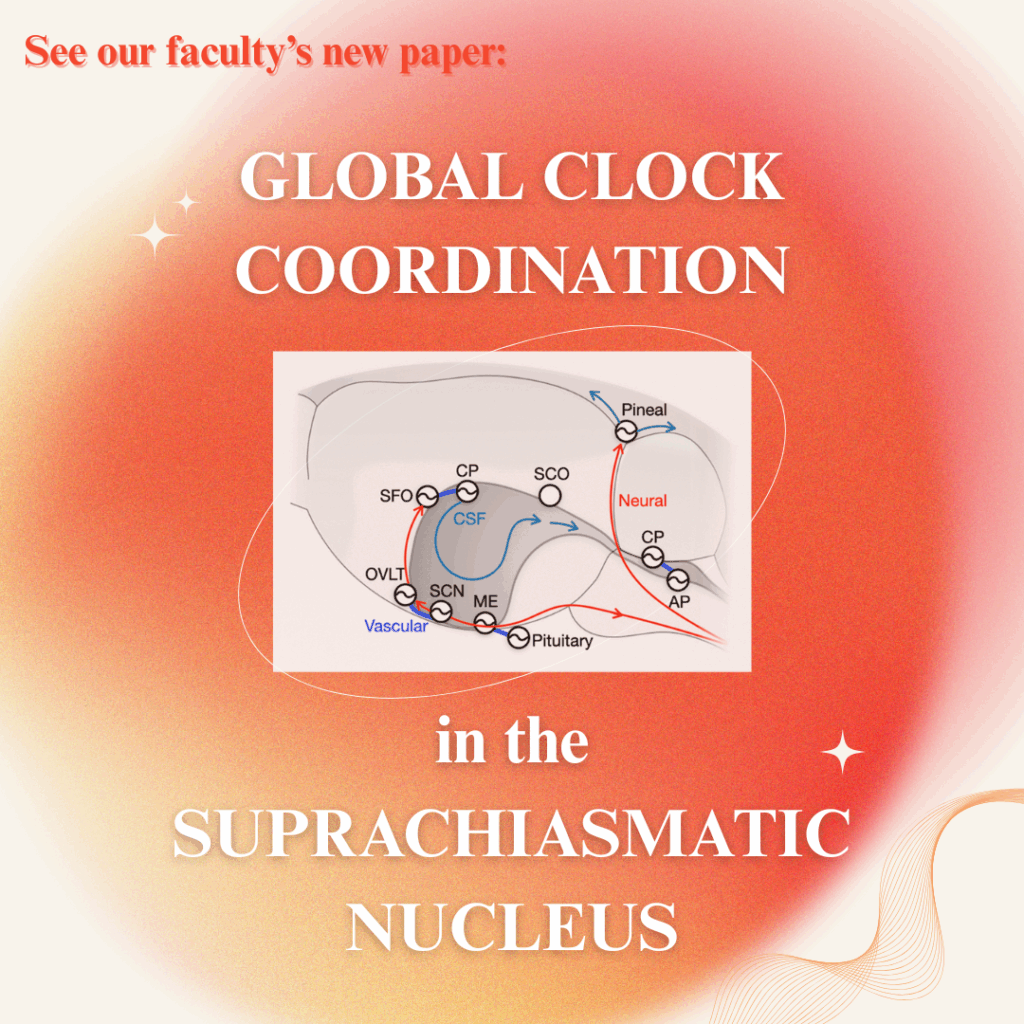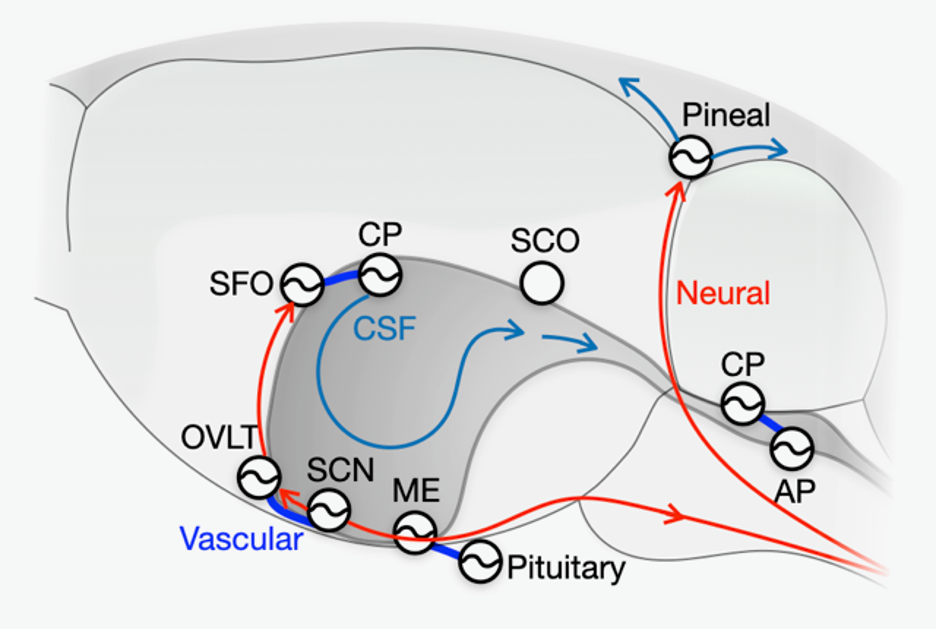[2025.04.25]
GIMBC professor, Jihwan Myung, recently published a paper entitled, “Global Clock Coordination by the Brain Clock in the Suprachiasmatic Nucleus Through Relay and Amplification of Diffusible and Neural Signaling.”
The suprachiasmatic nucleus (SCN) in the hypothalamus serves as the body’s master clock, synchronizing daily rhythms with the external light-dark cycle. It receives direct signals from the eyes, but how does such a small cluster of neurons coordinate timekeeping across the entire body?
While the SCN is known to send signals through the nervous system and release diffusible chemical messengers, the role of these diffusible signals has remained unclear. Myung and colleagues identified a specialized route—much like the pituitary portal system, which delivers hormones directly from the brain to the bloodstream without dilution—that connects the SCN to key sensory brain regions near the fluid-filled ventricles.
These circumventricular nuclei, with their leaky blood vessels, provide a unique pathway for SCN secretions to spread and amplify, enabling global circadian coordination. This mechanism allows the SCN to “broadcast” timekeeping signals without requiring direct synaptic wiring, ensuring that circadian rhythms are maintained across the brain without being diluted in general circulation.
By uncovering this fluid-based signaling network, we reveal a previously unrecognized layer of circadian communication—one that extends beyond neurons into the very fluids that bathe the brain. This discovery opens new avenues for understanding how the SCN regulates physiology and behavior, potentially offering new strategies for addressing circadian rhythm disorders.
To read the full paper, visit this link: https://doi.org/10.1111/ejn.70097





